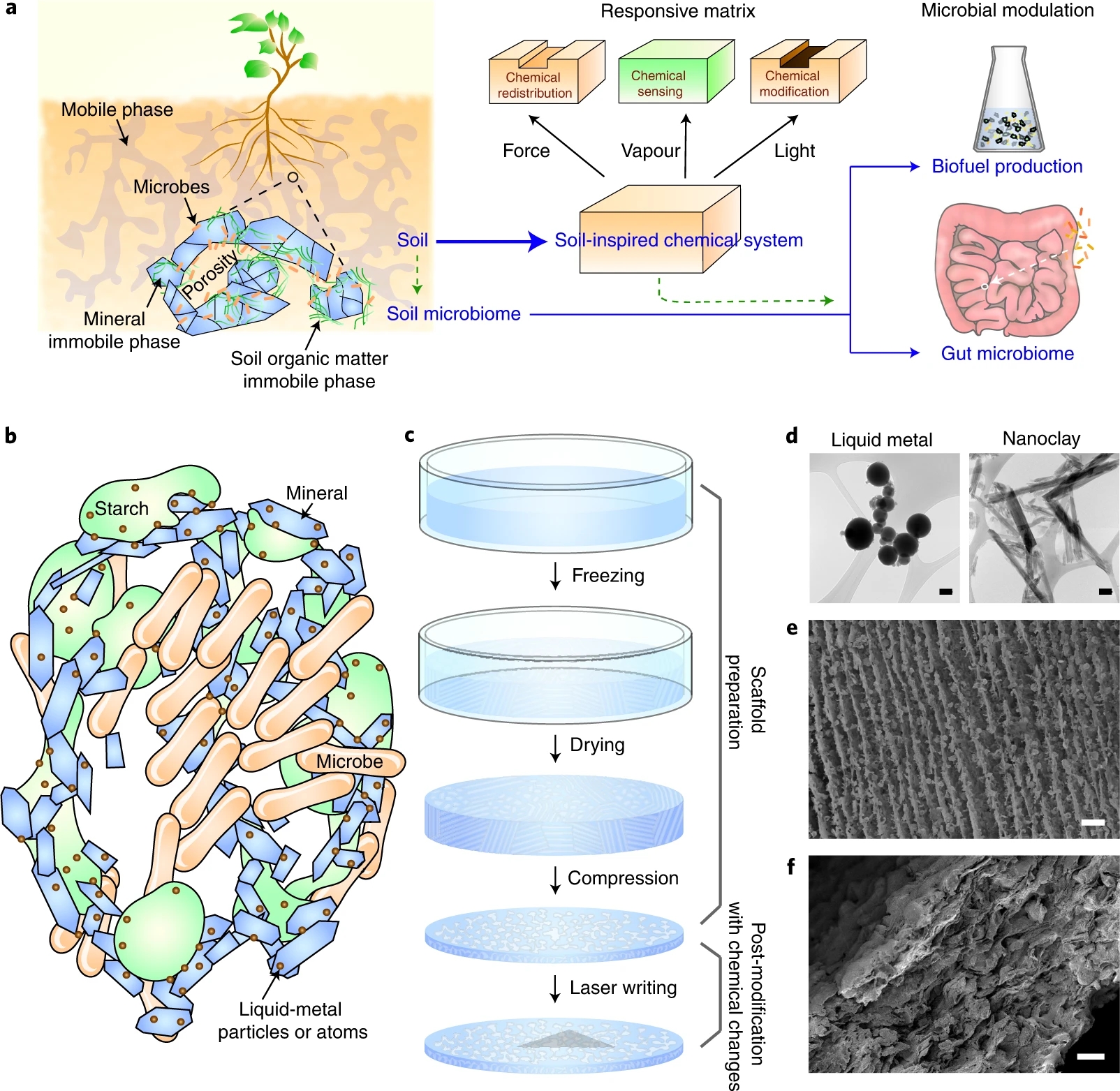Researchers Design Soil-inspired Multifunctional Chemical System
Date:28-10-2022 | 【Print】 【close】
Soil is a dynamic system of microbe-material interactions and environmental responsiveness. The soil-microbe complex is an integrated and adaptable system that can reshape its state according to the external environment.
Inspired by these characteristics of soil, researchers have designed a chemical system in which chemical restribution, sensing, and modification can be induced by external stimuli, which was done at the University of Chicago, and Prof. Prof. GAO Xiang from the Shenzhen Institute of Advanced Technology (SIAT) of the Chinese Academy of Sciences is co-first author of this study.
This study was published in Nature Chemistry on Oct. 24.
The microbial colonized environment of soil is a perfect example of microbe-material interaction in nature. On the one hand, endogenous soil minerals and soil organic matter interact dynamically with exogenous factors such as moisture and mechanical force to guide soil microbial communities. On the other hand, soil microbes regulate biogeochemical cycles to enrich soil with nutrients such as nitrogen, phosphorus, and sulfur.
The research team proposed a bottom-up synthetic approach to construct a chemical system composed of nanostructured minerals, starch granules, and liquid metals in order to loosely represent immobilized inorganic and organic materials and mobile phases in the soil.
"The system is chemically, optically, and mechanically responsive with programmable properties," said Prof. LIN Yiliang, corresponding and first author of this study and currently an assistant professor at the National University of Singapore. "We can 'encode' conductive information into the materials with mechanical pressure or laser patterning and then 'erase' the conductivity with chemical vapors. The whole process is reversible."
Besides the structural similarity to real soil and its dynamic responsiveness, the soil-inspired chemical system not only enhances microbial metabolism in vitro, but also enriches gut bacterial diversity under pathological conditions and modulates bacterial dysbiosis in vivo.
In in vivo experiments, the soil-inspired chemical system enhanced gut microbiota abundance and modulated dysregulated gut microbes under pathological conditions. “Soil-inspired chemical systems showed promise for the treatment of gastrointestinal disorders,” said Prof. GAO Xiang from SIAT, the co-first author of the study.
In addition to being used on gut microbiota, this chemical system can be used to study other microbial systems, such as skin and soil microbiota, which may have implications for human health and the stability and productivity of agro-ecosystems.

Soil-inspired dynamically responsive chemical system for microbial modulation. (Image by Prof. LIN Yiliang)
Media Contact:
ZHANG Xiaomin
Email:xm.zhang@siat.ac.cn
